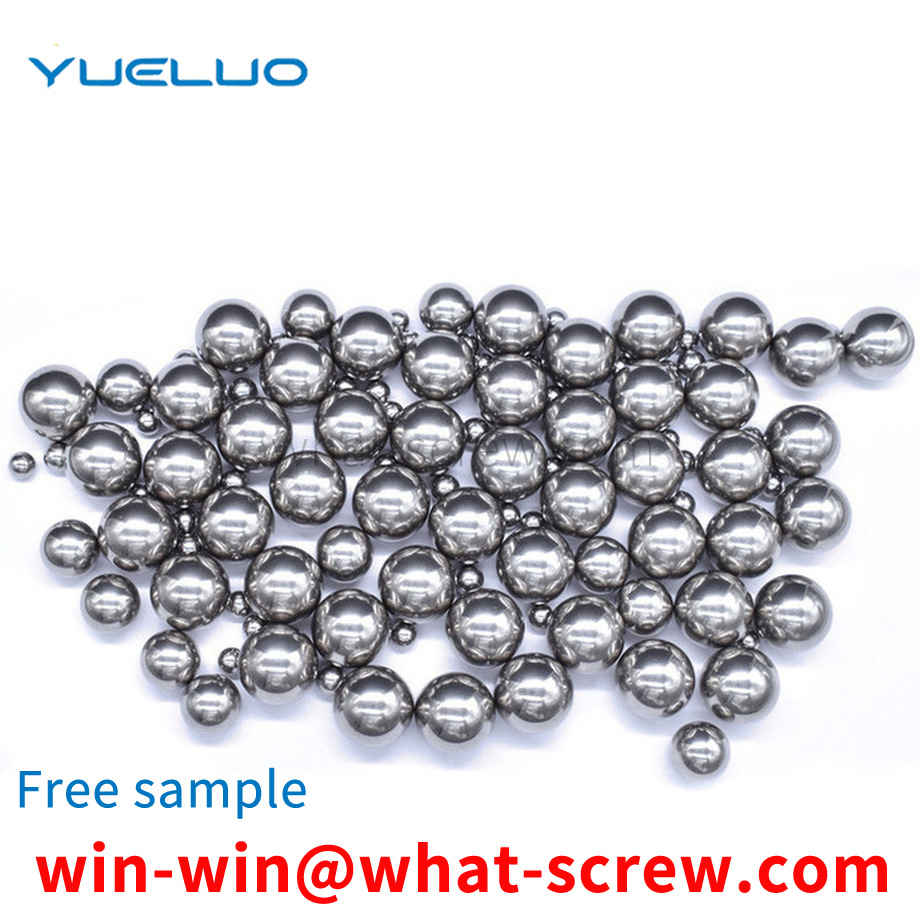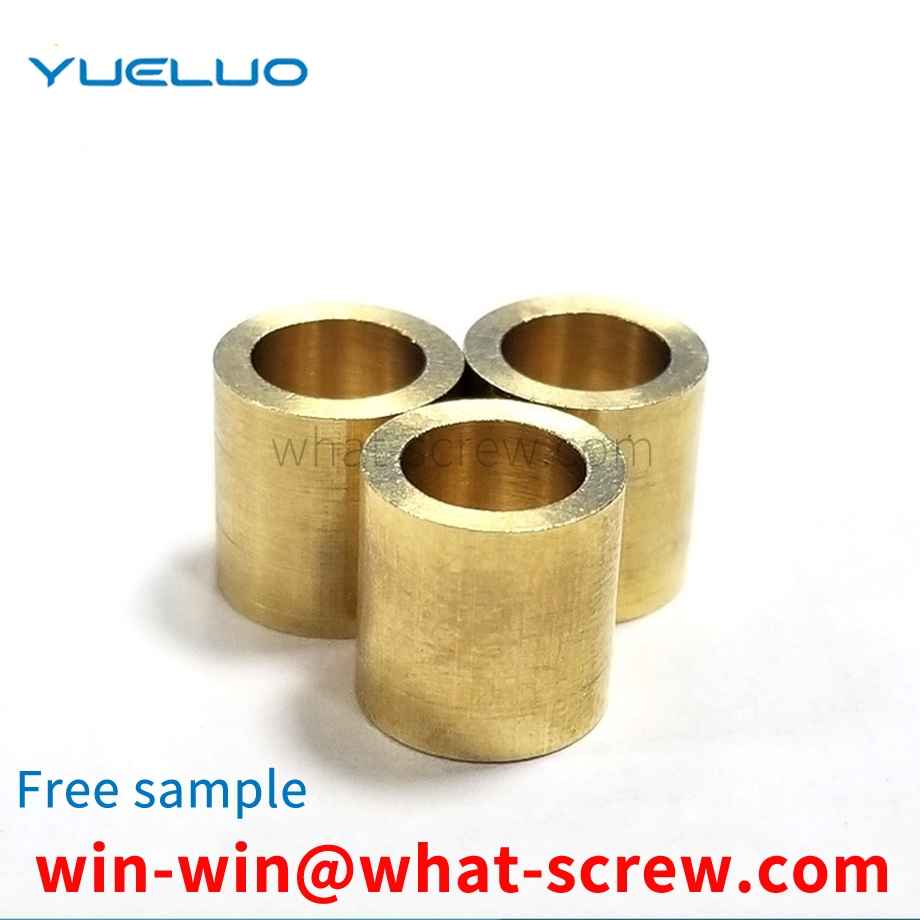The inner tooth elastic washer and the outer tooth elastic washer have many sharp elastic warping teeth on the circumference, which are pressed against the supporting surface and can prevent the loosening of the fastener. The inner tooth elastic washer is used under the screw head with smaller head size; the outer tooth elastic washer is mostly used under the bolt head and the nut. The elastic washer with teeth is smaller than the ordinary spring washer, and the fastener is evenly stressed and reliable to prevent loosening, but it is not suitable for frequent disassembly. Wave spring washer GB: GB/T 7246-1987 Wave washer is divided into WG type, WL type, WN type WG type wave washer WG type wave washer is an open elastic washer, which can usually be installed in a small space, such as giving The bearing is prestressed to reduce the noise of the bearing operation and improve the running accuracy and stability of the bearing. In addition, there are a large number of applied materials in electronic appliances, such as carbon steel, stainless steel, copper alloy and so on. WL-type wave washer WL-type wave washer is a lap-type elastic washer, which can usually be installed in a small space, such as prestressing the bearing, reducing the noise of the bearing operation, and improving the running accuracy and stability of the bearing. There are also a large number of applications in electronic appliances. Materials are carbon steel, stainless steel, copper alloy, etc. WN type wave washer WN type wave washer is a multi-layer wave crest overlapping elastic washer. Compared with the WL type, this series is composed of multi-layer materials, so the K value curve under the same compression stroke is flatter than that of the WL type, which is suitable for elastic force. Larger, and the elastic release of the entire working stroke is required to be more uniform. The materials used are carbon steel, stainless steel, copper alloy, etc. Disc spring washer Disc spring washer, also known as Belleville spring washer, was invented by the French Belleville. DIN6796 Disc Spring Washers (HDS Series) are lock washers designed for bolted and screwed connections. It is designed and manufactured according to DIN 6796 for the connection of medium or high strength bolts and screws. High bearing loads and elastic recovery make the HDS series very effective, and the bolt tension can withstand slack due to: wear of consumables, creep, relaxation, thermal expansion, contraction, or compression of seals. The HDS series increases the elasticity of the screw several times. It can effectively replace the ordinary spring washer, but it is not suitable for the combination of lock washer and flat washer. Since the HDS series is a disc spring that can be folded or overlapped. The combination of the butt joint can increase the deformation of the disc spring group, and the combination of the overlapping method can increase the spring force of the disc spring group. The ideal installation method is to flatten as much as possible. The closer it is to the flattened state, the faster the tension torque increases, and the proper bolt tension can be obtained without a torque wrench.
A screw can be equipped with only one spring washer or only one flat washer, or it can also only be equipped with a two-piece combination of flower teeth. The national standard number of the combination screw is represented by GB9074. The commonly used cross recessed small pan head three combination screw national standard is GB9074.8. This .8 refers to the small pan head. That is, the size of the head of the pan head screw that is often said. Denoted by letters as PM. Professional combination screw manufacturers, the habitual expression method is three-in-one PM. The commonly used cross recessed large pan head combination screw national standard is GB9074.4. Professionally called large pan head combination screws. Or R head, or B head. That is to say, the head of this combination screw is larger and thicker than the head of the small pan head combination screw. There is also a commonly used external hexagon combination screw, which is a cross external hexagon combination screw. It is often called a socket hexagon combination screw. The national label is GB9074.13.
In the manufacture of fasteners, the correct selection of fastener materials is an important part, because the performance of fasteners is closely related to its materials. If the material is improperly or incorrectly selected, the performance may not meet the requirements, the service life may be shortened, or even accidents or processing difficulties may occur, and the manufacturing cost will be high. Therefore, the selection of fastener materials is a very important link. Cold heading steel is a steel for fasteners with high interchangeability produced by cold heading forming process. Because it is formed by metal plastic processing at room temperature, each part has a large amount of deformation and a high deformation speed. Therefore, the performance requirements of cold heading steel raw materials are very strict. On the basis of long-term production practice and user research, combined with GB/T6478-2001 Technical Conditions for Cold Heading and Cold Extrusion Steel GB/T699-1999 High-Quality Carbon Structural Steel and target JISG3507-1991 Cold Heading Characteristics of Carbon Steel Wire Rod for Steel, taking the material requirements of grade 8.8 and grade 9.8 bolts and screws as an example, the determination of various chemical elements. If the C content is too high, the cold formability will be reduced; if it is too low, the mechanical properties of the parts cannot be met, so it is set at 0.25% - 0.55%. Mn can improve the permeability of steel, but adding too much will strengthen the matrix structure and affect the cold forming performance; when the part is quenched and tempered, it has the tendency to promote the growth of austenite grains, so it should be appropriately improved on the basis of international standards. 0.45 % - 0.80 %. Si can strengthen the ferrite and reduce the cold formability. SP is an impurity element, and their existence will cause segregation along the grain boundary, resulting in the embrittlement of the grain boundary and damage to the mechanical properties of the steel. It should be reduced as much as possible. B. The maximum value of boron content is 0.005%, because although boron element can significantly improve the permeability of steel, it will also increase the brittleness of steel. Excessive boron content is very unfavorable for workpieces such as bolts, screws and studs that require good comprehensive mechanical properties.
Stud bolts are manufactured in accordance with GB897-GB901 standards, the materials used are: Q235, 45#, 40Cr, 35CrMoA, Q345D, the specifications are: M3mm-M100mm, and the length can be customized according to user needs. High strength stud bolts, materials are 35#, 45#, 35CrMoA, 25Cr2MoV, 304, 316, 304L, 316L, 2H, 2HM, B7, B7M, B16, B8, 8, B8M, 8M, widely used in electric power, chemical industry , oil refining, valves, railways, bridges, steel structures, automobile and motorcycle accessories and other fields: generally used in mining machinery, bridges, automobiles, motorcycles, boiler steel structures, pendant towers, long-span steel structures and large buildings, etc. . Representation method of stud bolts: General stud bolts are expressed as: M12×100 GB 901-88 (standard) 35#/35# (material) 8.8 grade/8 grade (modulation grade) means: diameter = 12mm length = 100mm GB 901-88 adopts the national standard (of course, the industry standard can also be used as needed) stud bolt standard: GB 900-1988 Introduction to stud bolts Stud bolts save time and cost All stud bolt structures do not require drilling, Steps such as punching, threading, riveting, threading and finishing continue to expand the application potential of structural design, high current and small penetration. Therefore, welding to very thin sheets is possible. The workpiece for stud welding must be welded from one side. Can be soldered in all positions, with the help of extenders on vertical bulkheads that can be restricted. Since it is welded for a short time and there is little deformation after welding, no trimming is required. Because the welded structure does not require drilling, there is no leakage. The joint can achieve high strength, that is, the joint strength of stud welding is greater than the strength of the stud itself. How to install studs Good economy The advantage of other welding methods is the welding power. For mass-produced workpieces, standard studs are low cost. There are various types of equipment and welding torches, and the acquisition cost of equipment is relatively low. According to the product, it can be made into a multi-station automatic welding machine, or a high-precision gantry-type CNC automatic welding machine. Stud welding has high quality reproducibility and low rejection rate. However, in the application of stud welding, it should be noted that, like other fusion welding, there are certain restrictions on the carbon content in the steel. For structural steel studs, welding should be performed according to the recommended combination of stud material and base metal. There will be infusibility with the base metal. Combinations of stud material and base metal outside the recommended range shall be tested to determine the weldability and the product design requirements of the anchor bolt for the possibility of relevant inspection and evaluation.
When the countersunk head screws and hexagon socket head bolts are produced by the cold heading process, the original structure of the steel will directly affect the forming ability of the cold heading process. In the process of cold heading, the plastic deformation of the local area can reach 60%-80%, so the steel must have good plasticity. When the chemical composition of the steel is constant, the metallographic structure is the key factor to determine the plasticity. It is generally believed that the coarse flaky pearlite is not conducive to cold heading forming, while the fine spherical pearlite can significantly improve the plastic deformation ability of the steel. For medium carbon steel and medium carbon alloy steel with a large amount of high-strength bolts, spheroidizing (softening) annealing is performed before cold heading, so as to obtain uniform and fine spheroidized pearlite to better meet the actual production needs. For the softening annealing of medium carbon steel wire rods, the heating temperature should be kept above and below the critical point of the steel, and the heating temperature should not be too high, otherwise tertiary cementite will precipitate along the grain boundary, resulting in cold heading cracking. The wire rod of medium carbon alloy steel is annealed by isothermal spheroidization. After heating at AC1+ (20-30%), the furnace is cooled to slightly lower than Ar1, the temperature is about 700 degrees Celsius for an isothermal period, and then the furnace is cooled to about 500 degrees Celsius and air-cooled. The metallographic structure of the steel changes from coarse to fine, from flake to spherical, and the cracking rate of cold heading will be greatly reduced. The general area of softening annealing temperature for 35\45\ML35\SWRCH35K steel is 715-735 degrees Celsius; while the general heating temperature for spheroidizing annealing of SCM435\40Cr\SCR435 steel is 740-770 degrees Celsius, and the isothermal temperature is 680-700 degrees Celsius.
We have many years of experience in the production and sales of screws, nuts, flat washers, etc. The main products are: thin washers, wheel anti-theft bolts, U-shaped snap screws, high temperature resistant black nylon gaskets and other products, we can provide you with suitable products for you. Fastener Solutions.



















 Service Hotline
Service Hotline




